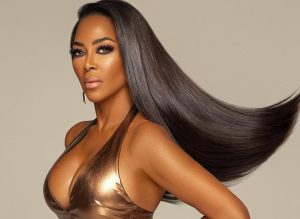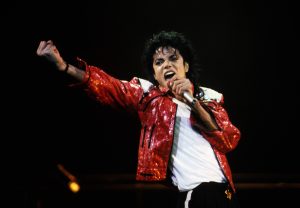Stephen Townley, a veteran of the sports and entertainment law sector, shares some of his unique insights in this feature.
What do you perceive as some of the emerging litigation risks facing sport and entertainment brands today?
In short:
- Environmental, social and governance risks (ESG);
- Likely increasing challenges to the ownership and exploitation of intangible assets as a result of the evolution in technology including generative AI;
- The ‘prune juice effect’ following maturity of business structures, which will result in likely changes in the content ownership model of intangible assets.
Before expanding on these, I have some provisos:
- Personal perspectives usually contain elements of bias. My bias is that I regard litigation in the sport and entertainment sector as a failure of the parties to find better ways to resolve their conflict. Litigation can end a reputation and that can end a short career – more so, perhaps, in sport than the entertainment. I am increasingly focused on seeing how technology tools that are evolving can support conflict management, as well as aiding the resolution process as an international neutral with JAMS and similar roles with others such as CAS and WIPO.
- Sometimes there is no route left to resolving a dispute other than litigation. An athlete like Lance Armstrong charged with doping offences only has the option to test the validity of the charges through due process. In the last 10 years I have handled high profile litigation in cricket and football where criminal allegations have been used tactically to create bias in civil process.
- General counsels within organisations have a very valuable role in mobilising management and other internal and external resources to flag litigation risks early and ‘head them off at the pass’. Technology can now aid that task.
Can you please explain why and how you have selected the above as contemporary risks?
Risk 1: Environmental, social and governance risks (ESG)
ESG, according to the Corporate Finance Institute, helps stakeholders understand how an organisation is managing risks and opportunities related to environmental, social and governance. This description covers a range of topics in both sport and entertainment, including reputation.
My favourite quote of all time on reputation is that of Abraham Lincoln, who said: “Character is like a tree, and reputation is like a shadow. The shadow is what you think of it; the tree is the real thing.”
Brands within sport and entertainment have heightened litigation vulnerabilities, particularly from reputational issues. They drive curiosity, debate and public opinion. Reputations underpin brand value. With success, sport and entertainment personalities become influencers. Which brand a successful sportsman or entertainer wears, uses or endorses, either in or out of competition or performance, will influence the behaviour of others. This includes purchasing decisions. High-level influencers can then monetise this role.
Taking Abraham Lincoln’s idea of a reputation being akin to a shadow, the size of the shadow can change between sunrise and sunset and occasionally may disappear when the sun goes behind a cloud.
“Character is like a tree, and reputation is like a shadow. The shadow is what you think of it; the tree is the real thing.”
A very recent event illustrates how brand values can be impacted in the blink of an eye, or in this case by a kiss on the lips. This kiss overshadowed the victory of Spain’s Women’s World Cup team against England in the final in Australia in August 2023. The incident no doubt damaged some reputations, yet might have improved others who responded promptly. The event happened when the president of the Spanish Football Federation, Luis Rubiales, is alleged to have kissed one of Spain’s leading players Jenni Hermoso on the lips without consent during the award presentation.
Public perception of gender reputational issues highlighted by the ‘Me Too’ movement has evolved quite rapidly. Its origin can be traced to Myspace in 2006. However, when Harvey Weinstein was arrested in New York on charges of rape in 2018, the phrase became global news. The allegations against Mr Rubiales hardly warrants fair comparison with Mr Weinstein’s convictions. However, a shadow has been cast because of public attitude towards what is acceptable behaviour of a senior football official. In the entertainment sector, recent days have seen serious allegations against Russell Brand. The response from YouTube has been to take down the feed (and, therefore, the monetisation model) relied upon by Mr Brand, who is reported to have 6 million followers.
Risk 2: Likely increasing challenges to the ownership and exploitation of intangible assets as a result of the evolution of technology including generative AI
Monetisation of sport and entertainment brands has largely relied upon on an exclusivity of access model. Performing a song and streaming a record are both examples of the creation of an intangible asset.
Such intangible assets may be recognised as intellectual property (IP) and in some circumstances exist as a combination of IP and contracts sometimes known as contract IP. IP can exist, for example, in names, images, likenesses, designs, works, performances, etc. In the sport industry, access might be through a sponsorship or endorsement agreement. Blockchain technology offers innovative new ways to monetise intangible assets through a tradeable instrument known as an NFT or smart contract. In the music industry, securitisation of a back catalogue – innovated, I believe, originally by David Bowie – has remained popular.
The lawyer’s approach to is first to identify property or analogous rights in the point of their origination and then consider their further application at the point of output. This includes copyright, trademarks, patents, personality rights, unfair competition and goodwill. Identifying the proprietary basis of the asset is only part of the story. A paintert may own copyright in a painting. If Hockney was the artist, the painting would have an entirely different value. Brand values reflect the value of the reputational shadow. The extent of the shadow will follow from a series of interactions with, for example, media, fans, followers, volunteers, influencers, participants, users, customers, partners, suppliers, staff, investors or shareholders and regulators.
Monetisation of sport and entertainment brands has largely relied upon on an exclusivity of access model.
When casting one’s mind back to original copyright ownership, it seemed straightforward to determine origination at input and output and establish provenance. For example, in 1953, the Supreme Court of the United States decided that in 1937 Walt Disney broke an agreement when an unauthorised copy of 32 copyrighted images was made. In 2023, the global artist Ed Sheeran was cleared by of a claim that he had breached copyright in Marvin Gay’s song ‘Let’s Get It On’.
AI increases opportunities to conceal and confuse origination and provenance of recognised proprietorship concepts. This is apart from huge practical difficulties in enforcement with jurisdiction shopping and non-alignment of national laws. Most civil law and some common law systems require human input for artists’ copyright to exist. AI technology has transformed the ability to generate content e scraped from the web and social media, which may involve copyrighted works to store it in a data-lake and then decide itself without human input how to repurpose the output.
In a recent speech from Lord Justice Birss reported in the Law Society Gazette, he admitted using ChatGPT in writing a paragraph of a judgement. He was clear, however, that he had already made his decision and he was simply using a large language-based system to help put his judgement into words.
Can copyright subsist at the point of input or output of AI-generated content? Possibly. More likely at the point of input! If it does exist, who will own it and do defences such as fair use or data mining exceptions apply? AI has already generated a short film and a rock band. It was apparently used to show Harrison Ford as a young man in the latest Indiana Jones film. Sir Paul McCartney has said recently that it might generate a new Beatles album. Interesting times lie ahead.
The majority of the value in sport events rests in a live performance. This is not the same monetisation model as parts of the entertainment or creative industries. One current manifestation of the challenges posed by the use of AI is the Hollywood dispute with the Writers Guild of America. The US has a system of registration of copyright, so a lot of early cases are arising in this jurisdiction.
Risk 3: The ‘prune juice effect’ following maturity of business structures and likely future changes in the content ownership model of intangible assets
As money inflows increase, there is a recognised phenomenon in sporting parlance called the ‘prune juice effect’. It was first observed in relation to US pro league athletes. Over time, a greater proportion of the wealth generated from monetising a sports performance and related rights as intangible assets would end up in the hands of the athlete. The magic percentage at the point of maturity in the cycle is 67% of income should flow to the athlete.
The majority of the value in sport events rests in a live performance.
This so-called prune juice phenomenon is an example of athlete power within the sport industry that seeks an increasing share of values generated. This places pressures on organisers of sports events to improve efficiencies in order to maintain margins when the cake gets sliced up. Similar initiatives have arisen in the entertainment sector as performers’ brands have become more valuable than the record labels.
This issue is now moving on as technology applied to the distribution and connectivity of content has provided new opportunities for sports and entertainment personalities to gather communities around themselves and seek to monetise these directly.
I see these changes as challenging parts of the traditional commercial models in sport, particularly with the growth of the brands of individuals through social media. Sanctioning models in sport provides an opportunity to make rules and regulations. Asserting ownership of rights by selecting hosts and agreeing terms for participation is the leverage needed.
Do you think that litigation risks are the same for sport and entertainment brands?
No, they are not the same. The particular challenge of sport as a brand is to maintain the integrity of the competition, thereby guaranteeing the fair and uncertain outcome of a sports performance. That is why drugs and match-fixing have featured so regularly in sport litigation. The entertainment industry does not depend upon uncertainty of outcome and therefore it faces different issues. The Rolling Stones’ original brand as the ‘bad boys’, compared to the Beatles as the ‘nice guys’, hardly inhibited their careers.
Can you please identify some further issues and changes that explain your interest in strategies and technologies to avoid litigation risks?
The outcome of litigation is unpredictable. A decision to litigate usually relies upon an assessment of who is going to win or lose. There is frequently a discounting of the cost and disruption within an organisation of pursuing the litigation route at early stages . Once litigation starts, it can be a very difficult to stop, particularly after large funds have already been spent. Attitudes harden and control of the settlement agenda lost.
Litigation costs have been increasing and can be seen to impact the bottom line of a business. There is no reason why legal risks should not be identified through technology at an early stage. An organisation might then do three things differently. First, it can allocate an internal function with responsibility for litigation and risk management. Second, it can decide how best to avoid the risk escalating into litigation through early-stage avoidance. Third, it can retain greater control at different stages of escalation and have more influence over the final outcome.
Third-party funders see litigation as assets to monetise. A recent example quoted in the Financial Times (14/9/2023) vividly illustrates this development. A New York court recently awarded a record $16 billion damages to two expropriated shareholders in an oil resources claim. The claim was largely financed by litigation funding by Burford Capital. Burford Capital was reported to make a potential $6 billion return on this investment.
The entertainment industry does not depend upon uncertainty of outcome and therefore it faces different issues.
Class actions have expanded in the financial, medical and energy sectors, giving access to a new range of claimants. On 25 May 2022, the BBC reported that Volkswagen was to pay £193 million to more than 90,000 drivers in England and Wales after it settled a High Court claim over the installation of emissions-cheating devices in its vehicles. The VW group has, so it was reported, already paid out more than €30 billion (£26 billion) worldwide. We have already seen class actions by copyright owners to challenge AI content. These developments might also have applications to the medical claims arising from repeated injuries in contact sports.
How have you witnessed the field of sport and media law develop over the course of your career to date?
My early experience was gained when I joined as general counsel to a Monaco-based SPV called SMPI, a joint venture between Horst Dassler of the Adidas family and Patrick Nally). It was the first in the world to package commercial rights of major sporting events. These included perimeter advertising, exclusive product supply to hosting venues, VIP tickets, travel and hospitality and merchandising. Television was the golden key that unlocked some of the early opportunities, starting with football. Clients included brands such as Coca Cola, Gillette and JVC. My role was to construct and help deliver these packages based upon IP and contracts.
The changes in the industry have been profound. When SMPI first started working with FIFA, FIFA had a permanent staff of fewer than a dozen employees and a modest office. Today it is a business generating $7.7 billion in the 4-year cycle 2019/22. I built my professional firm, Townleys, with my talented partners and staff to fill a gap in legal resources that had previously not existed. The firm evolved with new departments to reflect the needs of the clients, starting with IP creation and licensing in sponsorship and ending with departments dealing with media rights, sponsorship, regulation and litigation.
About Stephen Townley
What initially led you to specialise in sport and media law?
By luck rather than design, I happened to stumble into an area of law that was not developed. I often use the phase in describing my speciality in the early days as “In the land of the blind, the one-eyed man is king”. I published the first legal/commercial textbook on the sports industry outside the US in 1984 with friend and barrister Edward Grayson. I love certain sports, but I was never what you would call a ‘sports groupie’.
Related to the above, what was it that led you to take up your new position with Stobbs?
Stobbs are recognised disrupters and innovators in the intangible asset space. I have found them smart, passionate and solution-focused on delivering what the clients want and need in a changing world where intangible assets are increasingly valuable. They manage a huge volume of brand-related issues from legal to valuation to licensing to dispute management – right through, if needed, to litigation. Stobbs take a long-term relationship view with clients; they invest in developing and deploying technology and they comprise a multi-disciplinary team of lawyers and non-lawyers who are experts in the brand space. All of this mirrors my approach in Townleys and in Active Rights Management, so I have found a kindred spirit.
[ymal]
Considering your successes to date, do you have any future career aspirations that you can share with us?
My goal is to keep using and sharing my knowledge and experience to help sport and entertainment brands protect themselves from avoidable harm from conflict, whether that is financial, organisational or reputational harm. I am working on a book project that will look in detail at this, as well as working through Stobbs and my conflict resolver roles. I find JAMS particularly innovative in their approach and support of international neutrals such as myself. I also certainly would wish to continue my work with WIPO, CAS, CIArb and the Singapore Sports Dispute Resolution Centre and to focus this on pioneering early dispute resolution solutions.
Stephen Townley
Stobbs IP
Tel: +44 07880 505220
E: steve@activerights.com
Stephen Townley has been lucky enough to enjoy a career in law and business. In law he is a solicitor, where he has been senior partner and a seasoned ADR professional (FCIArb) whether appointed as an arbitrator, mediator or resolver. In business he has served as general counsel, board member and chairman. For the past 10 years Stephen has been involved in complex, high-value, cross-border litigation and high-profile reputational issues in sport in India and the Middle East. In law and ADR Stephen set up the law firm Townleys in 1984 and served as its senior partner for 18 years. The firm became recognised as the first and, for many years, the largest international sports law and media boutique outside the US.





















